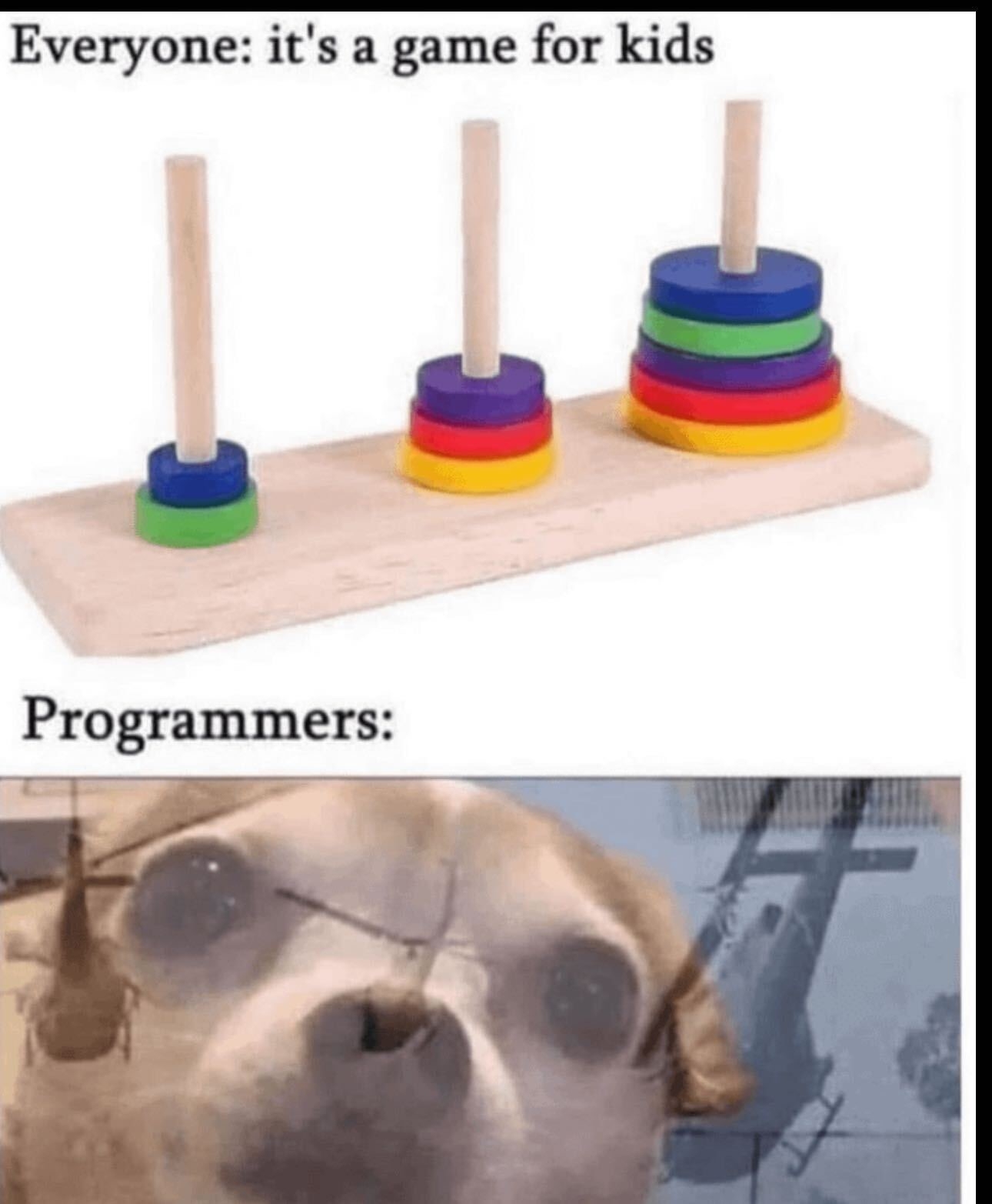this post was submitted on 05 May 2024
820 points (99.0% liked)
Programmer Humor
19932 readers
1250 users here now
Welcome to Programmer Humor!
This is a place where you can post jokes, memes, humor, etc. related to programming!
For sharing awful code theres also Programming Horror.
Rules
- Keep content in english
- No advertisements
- Posts must be related to programming or programmer topics
founded 2 years ago
MODERATORS
you are viewing a single comment's thread
view the rest of the comments
view the rest of the comments

It'd be a trick if you didn't already know the answer. Or at least, it would be for me. It's also hard to actually visualise.
I didn't know the answer either, but usually you can compose solution from solutions of smaller problems.
solution(0): There are no disks. Nothing to do. solution(n): Let's see if I can use solution(n-1) here. I'll use solution(n-1) to move all but last disk A->B, just need to rename the pins. Then move the largest disk A->C. Then use solution(n-1) to move disks B->C by renaming the pins. There we go, we have a stack based solution running in exponential time.
It's one of the easiest problem in algorithm design, but running the solution by hand would give you a PTSD.
Good for you. I think I'd figure it out eventually, but it would certainly take me a while.
I'd probably be trying a number of approaches, including the recursive one. Renaming pegs is a critical piece that you'd have to realise you can do, and you can't be sure you have a correct inductive solution unless you actually walk through the first few solutions from the base instance.